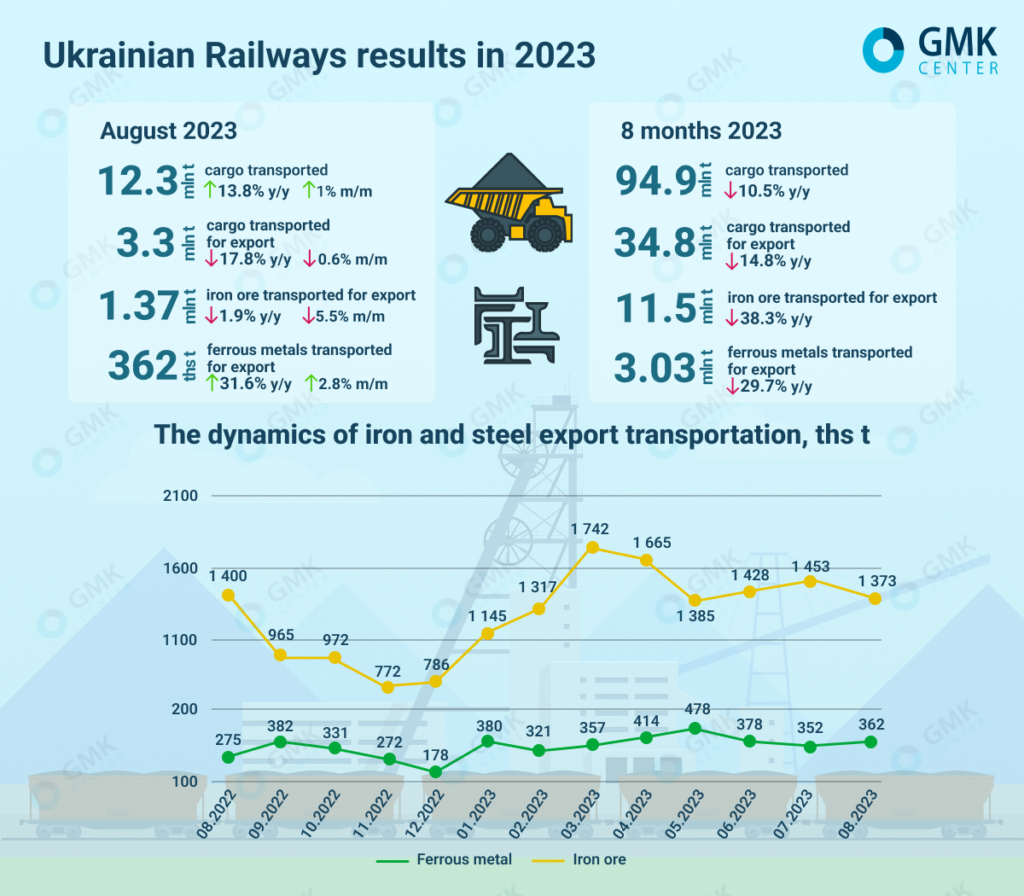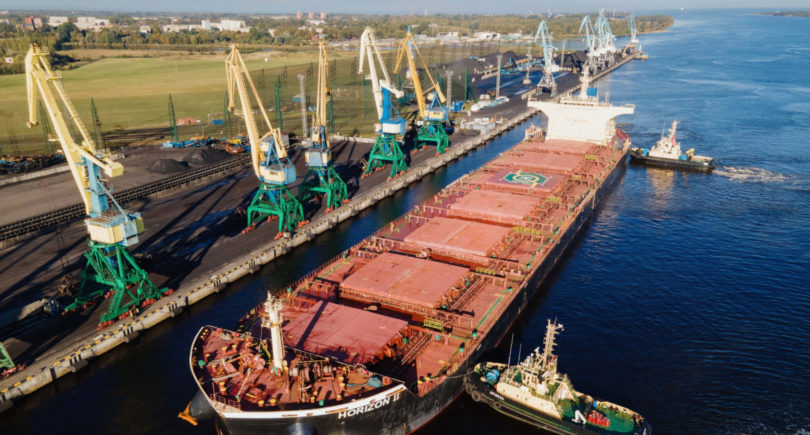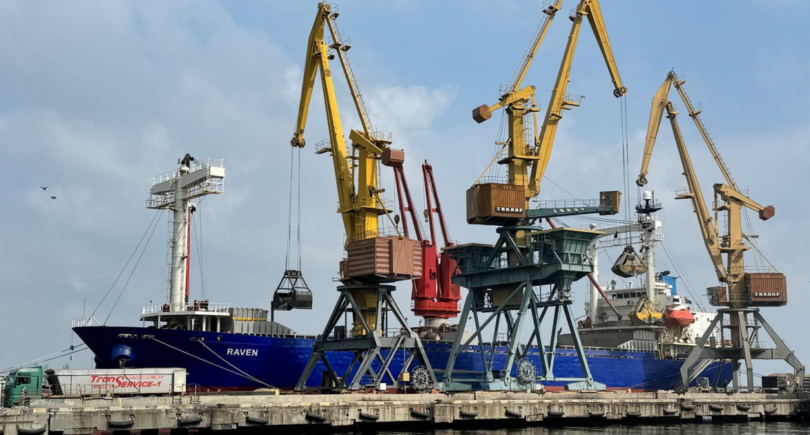
News Infrastructure Ukrzaliznytsia 338 14 September 2023
147,000 tons are steel billets, 139,000 tons are rolled products, 58,000 tons are pig iron, and 16,000 tons are ferroalloys
In August 2023, Ukrainian Railways (UZ) transported 362,000 tons of ferrous metals for export, which is 2.8% more compared to the previous month, and 31.6% more by August 2022. This is evidenced by the data of the railway operator.
147,000 tons are steel billets, 139,000 tons are rolled products, 58,000 tons are pig iron, and 16,000 tons are ferroalloys.
During January-August, export shipments of ferrous metals decreased by 29.7% compared to the same period in 2022 – to 3.03 million tons.
«The low volumes of production and export of products are connected with logistical problems, the unfavorable situation of the world market, as well as with the destruction due to combat operations of the two largest enterprises of the steel industry of Ukraine – Azovstal and Ilyich Iron and Steel Works,» UZ notes.
In August, export transportation of iron ore decreased by 5.5% compared to the previous month and by 1.9% y/y – to 1.37 million tons. 1.2 million tons of them went through land border crossings and 170 thousand tons (-5.5% m/m) – through ports.
In January-August, 11.5 million tons of ferrous metals were transported for export by rail, which is 38.3% less than in the same period of 2022.
In total, UZ transported 12.3 million tons of cargo in August, which is 1% more month-on-month and 13.8% y/y. In January-August, UZ reduced cargo transportation by 10.5% y/y – to 94.9 million tons. 34.8 million tons of cargo was transported in export traffic in 8 months, which is 14.8% less than y/y year, and in August – 3.3 million tons (-0.6% m/m; -17.8% y/y).

As GMK Center reported earlier, in 2022 Ukrainian Railways reduced transportation of iron and manganese ore by 59.2% compared to 2021 – to 41.7 million tons. Volumes of transportation of ferrous metals last year decreased by 57.8% y/y – to 9.2 million tons. In total, during the year UZ transported 150.6 million tons of cargo, which is 52.1% less compared to 2021.



